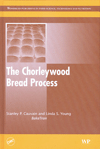
The National Football League (NFL) dodged a big time holdout, allowing the season to go on as planned. And, my local Chicago Bears have started out as usual: Win some; lose some. During the off season however, many players changed zip codes and with an abbreviated training camp, learning a new system was a challenge for many players, as seen in the sloppy pre-season games. A new team’s playbook was an important document for the players to get to know.
Much like a professional sports team, a new bakery also has its own set of challenges for its workforce. Whether it’s new looks, tricks, managers, rules or playing fields, a playbook would be an important document to have for the changing of hands.
For example, when we start up a new production line or a new plant, we often take employees from older systems and place them out in the field, without upgrading their training or providing chances to experience a new gameplan. We just expect the players to adapt and run the gameplan without any practice or coaching.
How do we go back and correct the course so that the second half of the baking season can be salvaged?
The first thing to do is to identify the main playbooks that need to be developed: Process Parameters; Machine Maintenance; Quality Attributes; Sanitation Practices; and Changeovers.
Because a new line or new bakery brings with it new speeds and abilities, understanding the new process parameters can be extensive but extremely important. Understanding your batch sizes, run times, cutting speeds, proofing and baking times and packaging configurations is the heart and soul of the yield and efficiency of the line. You will find operators who carry their own mini-playbooks where they make notes about the machine setups, but they tend to keep that information to themselves.
One way to overcome this lack of information, or in some cases hoarding of information, is for management to produce a “playbook” made available to all operators, so that consistency becomes the order of the day. A three-ring binder or a computerized reference screen with all setups documented and conveniently located at the workstation could save the management team and workforce a lot of costly penalties.
New machinery means new and different practices for machine care. Manufacturers typically deliver a manual with a new machine, but often those binders end up on a shelf, orderly or not, and never get looked at again. These companies have put more machines in the marketplace than any maintenance team will see in their lifetime, so it could be very important for the maintenance manager to make sure that the manuals are available to the crew and actually encourage the players to get into the books to understand the plays and remain on offense as long as possible.
Quality attributes tend to change like the wind in an open-ended stadium. Sometimes they change and no one knows about it. Sometimes the interpretation can be misleading, depending on who is looking at the rules or results. Updating the quality attributes and rules and making them readily available to all of the departments could be a great defense strategy against making the wrong product because of simple oversights.
New buildings and process systems equate to new cleaning practices. Throw the new Federal food laws on top of that and you have a reason to fill up a notebook with a lot of creative and correct practices so that sanitary conditions will be maintained without question. Everything from cleaning chemicals to the how to’s can be documented and made available to the team responsible for keeping the playing field in its best condition possible.
Finally, the most important playbook of all when it comes to plant efficiency are changeovers. This operation can be a killer, especially when you have a plant producing many varieties. When a changeover occurs, there can be many adjustments and settings and all of the nuances involved in that next setup that no single person will ever remember. For instance, let’s say there are 30 varieties of product that have to be made on a single line. Mathematically, there are 870 different combinations of changeovers in those 30 varieties. How can it be 870, you ask? If you make two columns that list the 30 varieties down each column, and then start matching up all of the combinations, the math plays out. That is a lot to remember.
Turn your attention back to the NFL sidelines for a minute. The camera shot often shows the head coach or offensive coordinator hiding behind a laminated cue card. That card contains all of the different plays that could be run under different circumstances. These are some very smart people that find their way to the big leagues, and they still need help in remembering the gameplan and options. What makes us think that because we are smart bakers, we don’t need help remembering what to do under certain circumstances?
It’s time to execute best practices from the bakers on the sideline. With some handy playbooks and a well-informed team, when it’s opening kick off, you can be confident that you will put one in the win column when you’re done.





